The Northwest Arkansas and Ozark regions are well known for their rocky and poor soil conditions. Most of us who plant a vegetable garden or even a flower garden yearly end up investing in raised or hanging beds. As well as bringing in soil. Even after all this work some of us have purchased topsoil only to find out later that it was full of clay. At this point, some people try to add sand, but sand is not the solution. Aeration and proper nutrients are the way to better soil in lawn care or landscaping.
Lawn Care Fertilizing For Better Soil
Then we move on to commercial fertilizers. This gives some temporary benefits but in the end, we haven’t actually changed the soil conditions. All the chemical fertilizers have done are run off each time we have watered our crop and left trace elements in our produce. In the end, we just keep spending more money to replace these fertilizers and our soil content gets worse. A soil test is always a great place to start. Once we know what the soil is lacking the deficiencies can be added back in properly. Without the soil test, all sorts of vitamins and minerals can be added that are not necessary. Too much of a good thing is often bad later on. Slow and steady wins the better soil race.
Lots and lots of organic matter is the best solution. Leaves, manure, hay, and composting, in general, are a great way to start. But first, maybe we should take a minute to find out what is or isn’t already in our soil.
Your local extension office may be a great place to start if you want to take them a sample of your dirt. Or you could buy a soil test kit and perform one yourself.
Soil content is measured on a PH scale from 0 to 14. 0 is pure acid and at the top 14 is nothing but alkalinity. This can all be kinda boring so maybe we should just pause a little longer and look at what’s already growing in our yards.
What to look for in the plants you’re growing to tell how the soil is doing.
If you have noticed the lower leaves on your plants turning pale it may be from a lack of nitrogen in the soil. Poultry manure, eggshells, and legumes are an easy cure for this problem.
Leaves that are turning yellow and beginning to curl up with black tips may be plants that are lacking sufficient calcium. Bone meal or crushed oyster shells which we also feed to our chickens to make sure they get enough calcium in their diet is a good place to start. An even easier solution is saving your eggshell to add to your compost pile.
A magnesium deficiency is noticeable if your plants are losing their leaves or fruit has poor color. Epsom Salt is a great way to add magnesium back into a lawn or garden. The directions are on the back of most Epsom Salt bags. Potassium will help with this as well, that’s as simple as adding a banana peel. For years I had problems with my roses bushes until a wonderful lady told me she chops up her banana peels and puts them at the base of her roses bushes.
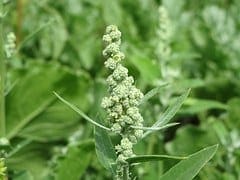
Phosphorous is the last you will notice this one if your leaves are turning purple, the plants aren’t flowering or producing fruit. Fish emulsion or chicken manure should level this back out. I take this one for granted because when I vacuum out the fish tank once or twice a year I pour the wastewater in my garden. A word of caution if you are buying fish emulsion it may attract raccoons, and chicken manure should be left to sit. If applied fresh as it may burn your plants.
Henbit, chickweed, and lamb’s quarters are signs that your soil is fertile. These plants commonly are seen as weeds right up there with dandelions, mullein, dock, and sorrel which are all signs that your soil is acidic.
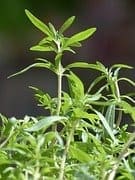
Alkaline soil will grow plants like goosefoot, salad burnet, true chamomile, and wild carrots. So in a nutshell we need to pay more attention to our weeds instead of just ripping them up because they can also be the cure for poor and rocky soil.
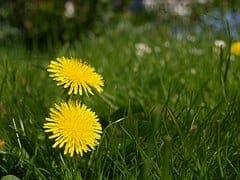
Yes, you heard me you want weeds. At least for part of the year, and really some weeds are kinda pretty. I love dandelions, and the long taproot that they grow helps aerate the soil. Broadleaf plantain does the same thing and tolerates both wet and dry soils as well as standing up to a lot of foot traffic.

If you are highly opposed to weeds, or your POA has strict policies on dandelions there are other options, without using a ton of chemical fertilizers. Green Tea fertilizers are a terrific additive, followed up with crop rotation, and planting ground covers.
Legumes including peanuts and clover are great alternatives. Peanuts not only aerate but add nitrogen back into the soil when the leftover or spent shells get tilled under at the end of the season.
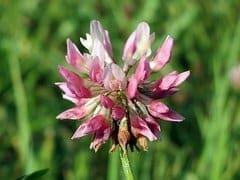
Medium Red Clover is also a legume and can be planted in-between seasons. The beginning of spring or fall. It loosens compacted soil and provides nutrients to your yard or garden. White Clover is a pretty perennial that will help with erosion in the winter. Crimson clover is an annual with gorgeous strawberry blooms that will help attract pollinators to help your yard thrive. Yellow Blossom Clover may be the best clover it is drought tolerant and helps with phosphorus, potassium, and nitrogen. Can you tell how much we like clover yet, the blooms are pretty and our yard has huge erosion problems it’s a win-win because there is a clover for almost every ailment your lawn may have.
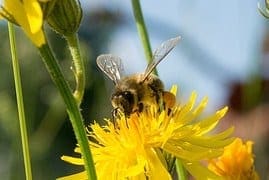
The Right Grass For your Soil
The type of grass you pick for your yard can play an important role in your soil rejuvenation too. Winter Rye Grass helps with erosion and nitrogen control in a season when most of our gardens and yards are lying fallow.
Remember that if you give back to your garden or lawn it will show you its thanks.
Being productive in the yard or garden has more to do with increasing the fertility of your soils. Try to remember to rotate where you plant your crops and in the winter use a cover crop to help keep the soil loose and rich in nutrients. Also if you’re using clover to cover crop bees and other pollinators will be happy to help your gardens flourish.
